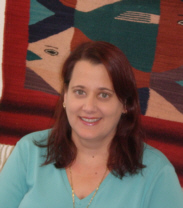Dr Sonya Glavac
Lecturer - Faculty of Humanities, Arts, Social Sciences and Education; School of Humanities, Arts, and Social Sciences

Phone: +61 2 6773 3124
Email: sglavac@une.edu.au
Qualifications
B.A. (Hons) M.A. (Queensland), PhD (Arizona)
Teaching Areas
Supervision Areas
Population/urban geography focusing on international and seasonal intra-urban migration as well as population forecasting.
Research Interests
Sonya's teaching and research interests focus on international, seasonal and intra-urban migration, population forecasting, and the role of these factors on land-use change. Her recent research is centered on three topics: (1) the impact of seasonal migration to lakeshore communities in the Ozarks, U.S.A.; (2) the attitudes toward immigrants and immigration policy held by U.S. citizens and those on the front lines of the immigration debates, namely those in the civilian border patrol Minuteman Project, and the desert humanitarian groups Samaritans/No More Deaths; and (3) an empirical study undertaken in Phoenix, AZ on neighborliness. The goal of the work has been to assess whether there are social differences between private neighbourhoods managed via a Home Owner Association (HOA), and more traditional neighbourhoods based on voluntary associations.
Publications
Glavac, S. and Sorenson, A. (Editors) 2013. Australasian Journal of Regional Studies, 19(1). pp 1-151.
McLaughlin, R. Sorenson, A and Glavac, S. 2013. "Intra-metropolitan Housing Supply Elasticity in Australia: A Spatial Analysis of Adelaide" 52nd Annual Meetings of the Western Regional Science Association , Santa Barbara, CA Feb.
Kirby, A. And Glavac, S. M. 2012 "Privatized Development and Quality of Life" Urban Design and Planning ,165(3). pp 167 –175.
Glavac, S. M. 2010." Applied Geography" in Warf, Barney. Encyclopedia of Geography. Sage Publications. pp 100-102.
Cabrera, L. and Glavac, S. M. 2010. "Minutemen and Desert Samaritans : Mapping the Attitudes of Activists on the Immigration Front Lines" Journal of Ethnic and Migration Studies 36(4) . pp 673-695.

